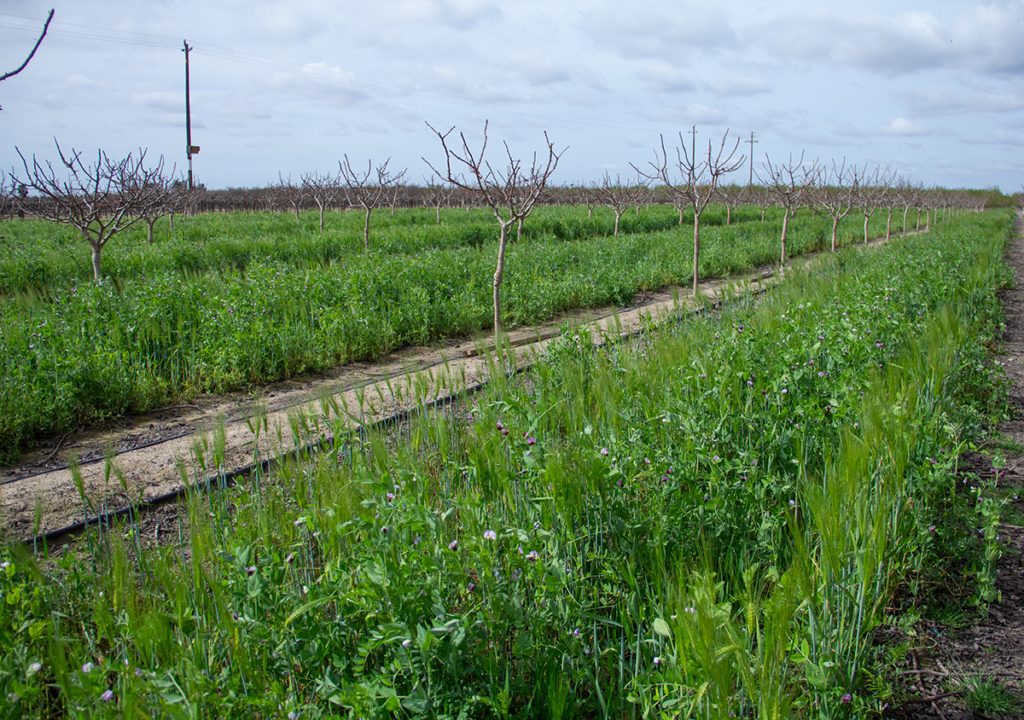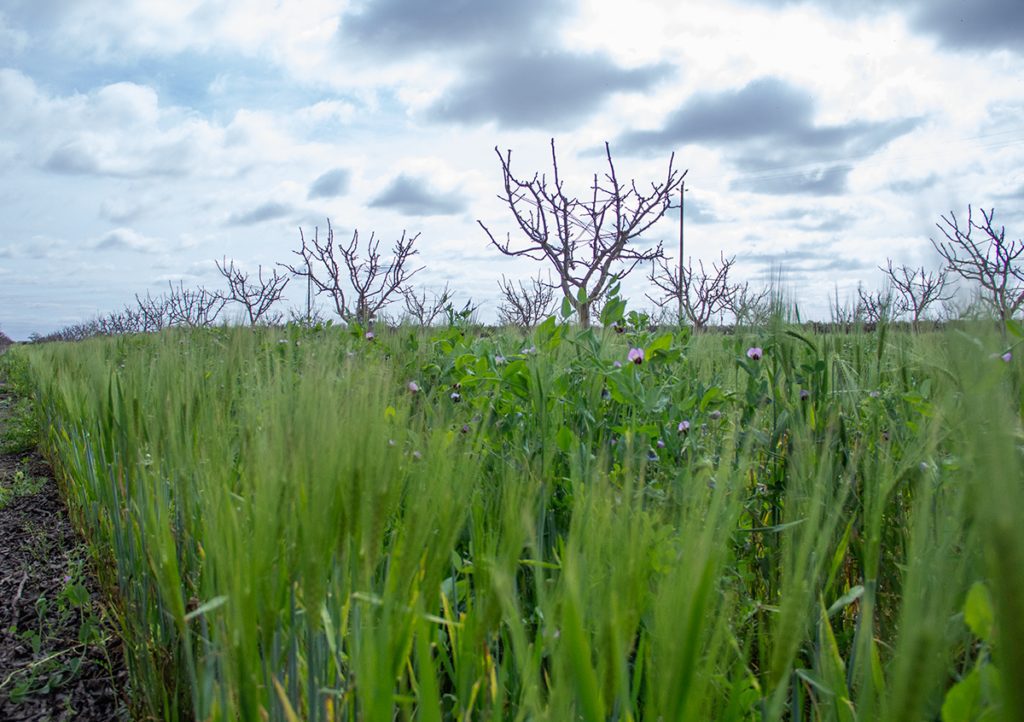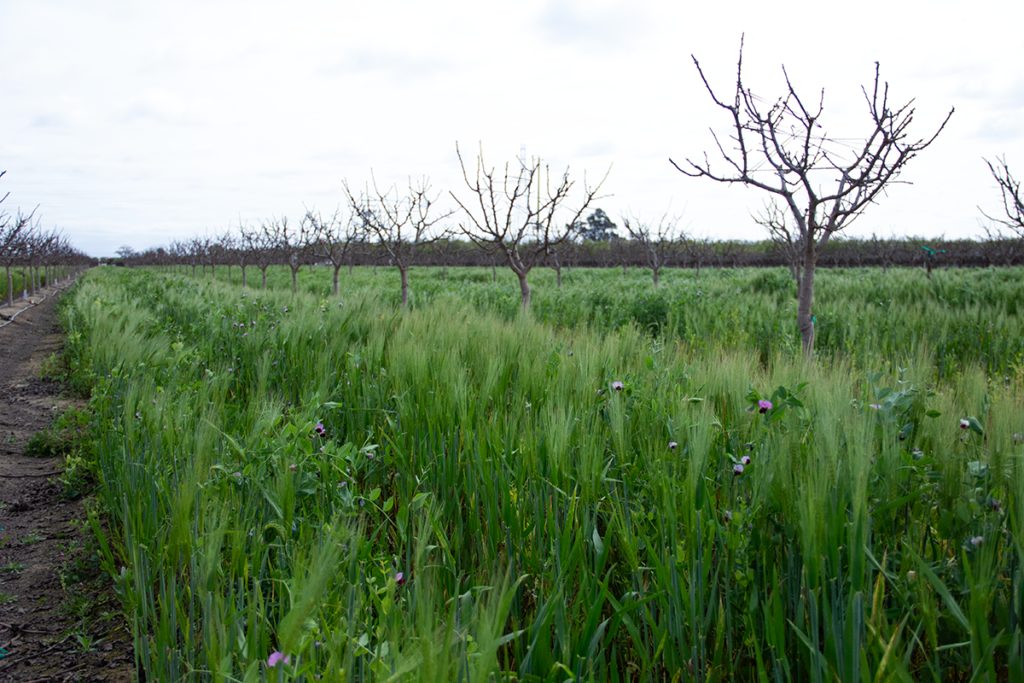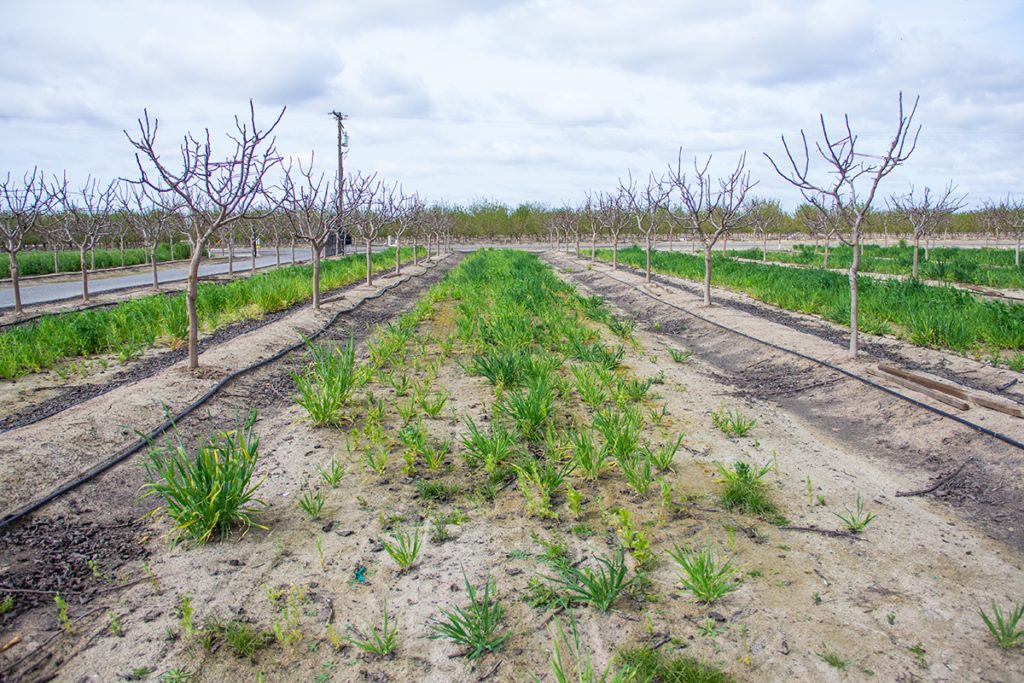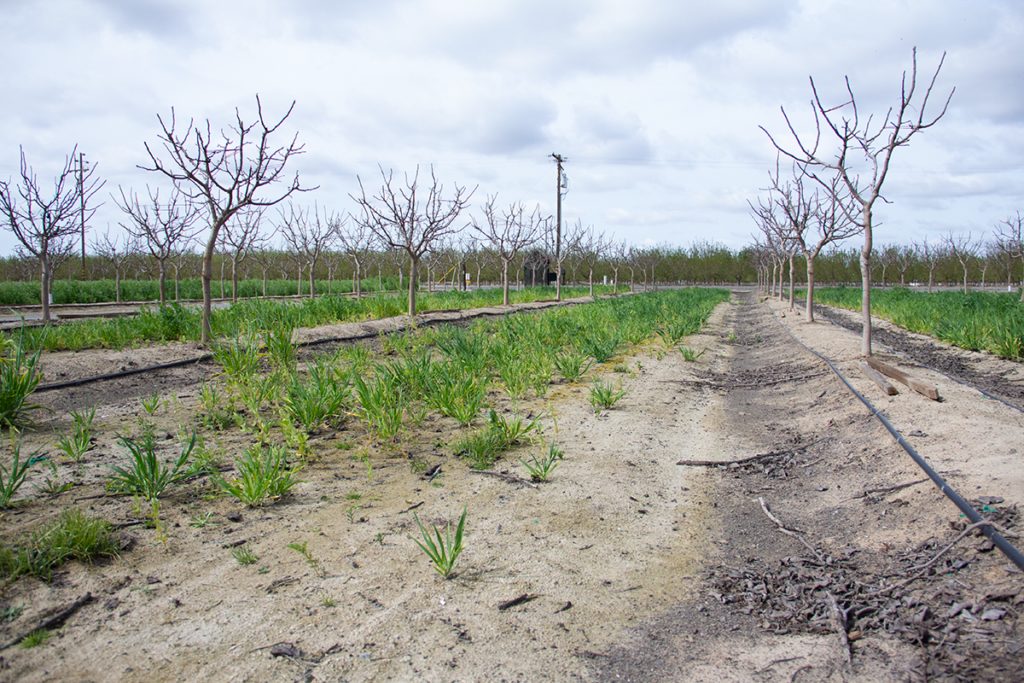Incentive programs are a vital component to enable farmers to implement new production approaches in their operations. Vice President of Matoian Brothers, LLC., Richard Matoian explained they have been having success with new incentive programs from USDA’s Natural Resource Conservation Service (NRCS). “We actually participated in the compost program and put that down in early November. And we also participated in the cover crop program,” Matoian explained.
In a young pistachio orchard in sandy loam soil, Matoian irrigated the ground with flood water at the end of October. About a week later the cover crop seed was planted. The results have been impressive in terms of growth. “We put about 45 pounds per acre in the row, planted about an 11 to 12-foot swath in the rows. Within about ten days, the cover crop started peeking through the soil. Since then, it’s just been rain fed,” said Matoian.
The cover crop mix that was planted was 45 percent bell beans, 35 percent peas, 10 percent vetch, and 10 percent barley. While it was the same mix that was planted in different areas of the operation, there were varying results. Cover crop seed that did not receive the flood irrigation prior to planting did not grow as vigorously. “The pre-irrigated stuff is probably two-and-a-half to three feet tall. The stuff that was not pre-irrigated is probably standing less than a foot tall,” Matoian noted.
The program that Matoian has been working through is the San Joaquin Valley Land and Water Conservation Collaborative program. It is funded by NRCS under the Regional Conservation Partnership Program. Matoian said that incentive programs really help encourage growers to experiment with new practices and new methods. “We’re always looking to try different things to see what works and maybe what doesn’t work. This program definitely helps us do that,” Matoian explained.

Brian German
Ag News Director / AgNet West











